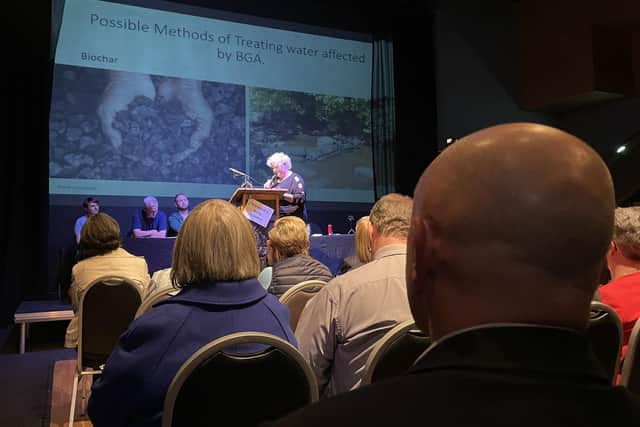Public meeting highlights problem of toxic algae in Lough Neagh
and live on Freeview channel 276
Those in attendance packed an auditorium at the Seamus Heaney HomePlace centre in Bellaghy, Co Londonderry close to the northern shores of the lough.
The event was organised by the Save Our Shores group, set up in August in response to the outbreak of algae.
Advertisement
Hide AdAdvertisement
Hide AdOther waterways in Northern Ireland have also been affected.


Lough Neagh is Ireland’s largest fresh water lake, and supplies 40% of Northern Ireland’s drinking water.
It also supports a major eel fishing industry.
The meeting on Wednesday evening started with the reading of Heaney’s poem A Lough Neagh Sequence.
Among the speakers was Mary O’Hagan, a co-founder of the Save Our Shores group.
Advertisement
Hide AdAdvertisement
Hide AdShe said, as an open water swimmer, her and others had been growing increasingly concerned about the water in the lough.
Peter Harper, from the Lough Neagh Partnership, said having functioning government at Stormont would help, and called for a dedicated environment minister to be appointed.
The environment brief is currently included within the agriculture portfolio, although no ministers are in post while the institutions effectively remain collapsed.
He said the situation should be categorised as an emergency
“It’s not going away quick, we need resources,” he told the meeting.
Advertisement
Hide AdAdvertisement
Hide AdThe algae growth is linked to excess nutrients in the water.
Nitrogen and phosphorus from agricultural fertiliser running off fields is believed to be a major contributory factor.
The spread of the invasive Zebra mussel species is also understood to have played a role, as they have made the water clearer, allowing more sunlight to penetrate, stimulating more algal photosynthesis.
Climate change is another factor cited, with the temperature of the lough having risen by 1C in the last two decades.
Advertisement
Hide AdAdvertisement
Hide AdThe deaths of birds and dogs have been linked to the recent algae blooms and anglers are being urged not to eat anything they catch.
A number of water-based businesses on Lough Neagh have also had to stop operating.
NI Water has insisted that its intensive treatment processes mean there is no health risk associated with drinking water sourced from the lough.
Civil servants at Stormont are attempting to co-ordinate efforts to take action, but critics claims the current lack of devolved government in Northern Ireland is hindering the response.
Advertisement
Hide AdAdvertisement
Hide AdEarlier this week the archbishops of Armagh criticised the response to the situation as “too slow”, urging a task force to be formed.
Archbishops John McDowell and Eamon Martin said the lough is facing an “environmental disaster”.